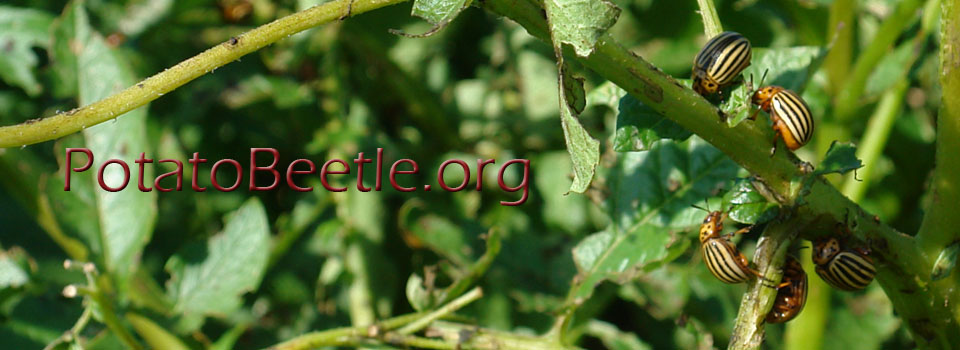Rasoolizadeh A, Goulet MC, Guay JF, Cloutier C, Michaud D. J Insect Physiol. 2018;106:125-133. doi: 10.1016/j.jinsphys.2017.03.001.
Herbivorous insects use complex protease complements to process plant proteins, useful to adjust their digestive functions to the plant diet and to elude the antidigestive effects of dietary protease inhibitors. We here assessed whether basic profiles and diet-related adjustments of the midgut protease complement may vary among populations of the insect herbivore Colorado potato beetle (Leptinotarsa decemlineata). Two laboratory colonies of this insect were used as models, derived from insect samples collected in potato fields ∼1200 km distant from each other in North America. Synchronized 4th-instar larvae reared on potato were kept on this plant, or switched to tomato or eggplant, to compare their midgut cathepsin activities and content of intestain Cys proteases under different diet regimes. Cathepsin D activity, cathepsin L activity, cathepsin B activity and total intestain content shortly after larval molting on potato leaves were about two times lower in one population compared to the other. By comparison, cathepsin D activity, cathepsin B activity, total intestain content and relative abundance of the most prominent intestain families were similar in the two populations after three days regardless of the plant diet, unlike cathepsin L activity and less prominent intestain families showing population-associated variability. Variation in Cys protease profiles translated into the differential efficiency of a Cys protease inhibitor, tomato cystatin SlCYS8, to inhibit cathepsin L activity in midgut extracts of the two insect groups. Despite quantitative differences, SlCYS8 single variants engineered to strongly inhibit Cys proteases showed improved potency against cathepsin L activity of either population. These data suggest the feasibility of designing cystatins to control L. decemlineata that are effective against different populations of this insect. They underline, on the other hand, the practical relevance of considering natural variability of the protease complement among L. decemlineata target populations, eventually determinant in the success or failure of cystatin-based control strategies on a large-scale basis.
